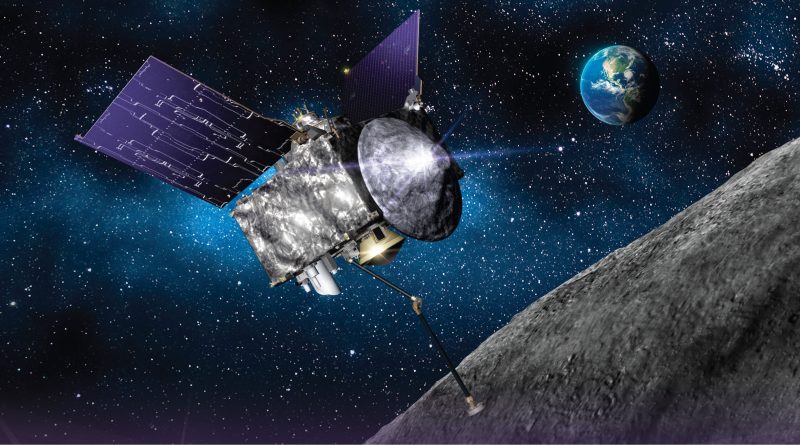NASA’s OSIRIS-REx aces Deep Space Maneuver, to Search for Trojan Asteroids in February
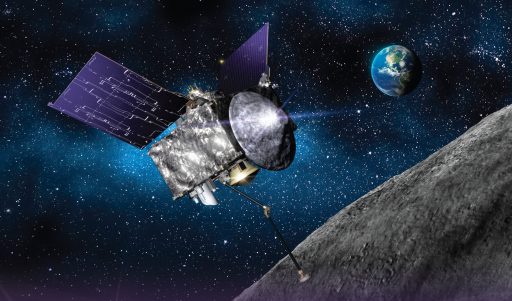
NASA’s OSIRIS-REx Asteroid Sample Return Spacecraft aced its first Deep Space Maneuver on December 28, 2016 and is now lined up for a planned September 2017 flyby of Earth that will alter the spacecraft’s path to enable it to link up with Asteroid Bennu in 2018 for an ambitious mission of discovery.
The success of the Deep Space Maneuver was confirmed by NASA on Wednesday after sufficient tracking data was gathered from the spacecraft following the Dec. 28 main engine firing. The large maneuver changed the spacecraft’s speed by 431 meters per second and the vehicle’s MR-107S main engines consumed 354 Kilograms of Hydrazine fuel, propelling the asteroid explorer with a thrust of 112 Kilogram-force.
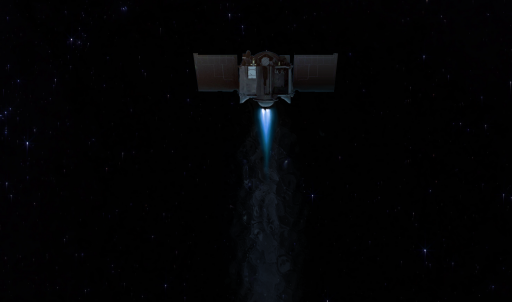
After completion of the maneuver, OSIRIS-REx sent back telemetry data recorded during the firing, indicating all went well with the critical engine burn, but teams had to track the spacecraft’s trajectory for several days to fully confirm the maneuver had placed the vehicle onto the correct path.
“DSM-1 was our first major trajectory change and first use of the main engines, so it’s good to have that under our belts and be on a safe trajectory to Bennu,” said Arlin Bartels OSIRIS-REx deputy project maneuver at the Goddard Spaceflight Center.
After completion of the Deep Space Maneuver, OSIRIS-REx powered up its High Gain Antenna for the first time for a checkout. While still in close proximity to Earth after its September 8 liftoff from Cape Canaveral, OSIRIS-REx used its Low and Medium-Gain Antennas – the High-Gain Antenna is required at greater distances to achieve a meaningful data rate for the exchange of science/telemetry data and telecommands. The mission plans to switch primary communications over to the High-Gain Antenna later in January.
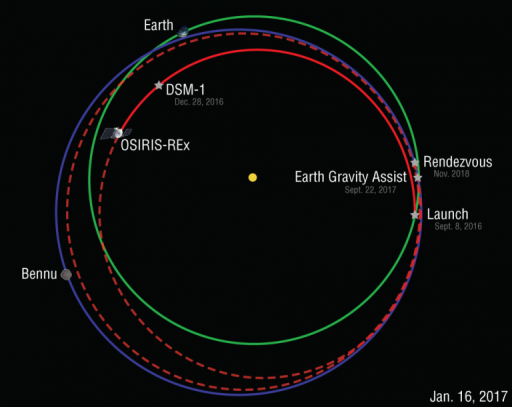
At 18:06 UTC on Wednesday (Jan. 18), OSIRIS-REx completed a successful Trajectory Correction Maneuver with its smaller thrusters, cleaning up after last month’s Deep Space Maneuver to fine-tune the spacecraft’s trajectory toward the Earth flyby.
But before OSIRIS-REx is inbound to Earth, an interesting addition was made to its mission – searching for Trojan asteroids inhabiting Earth’s orbit around the sun. Trojans are constant companions to planets in the solar system, traveling around the sun 60 degrees in front and behind the planet in what is known as the 4th and 5th Lagrangian Points – stable points in space where the gravitational pull of the sun and the planet provide precisely the centripetal force required to orbit with them.
The first three Lagrange points are on a line connecting the two principal bodies and are considered semi-stable while the 4th & 5th points are stable – allowing objects to remain at these points indefinitely if there are no other forces acting on them. Six planets in the solar system are known to have Trojans, Jupiter leads the pack with over 6,000 known Trojan Asteroids.
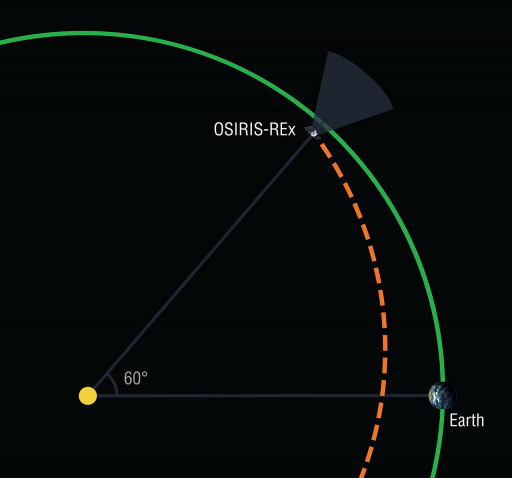
To date, there is only one known Earth Trojan – 2010 TK7, discovered in 2010 by NASA’s NEOWISE project. Scientists predict there to be many more Trojans leading and trailing Earth, but their detection is extremely difficult from a vantage point near Earth as they appear very close to the sun.
OSIRIS-REx – no longer bound to Earth and in an independent orbit around the sun – will have a unique chance to spot leading Trojans in a narrow window of opportunity in mid-February that places the outbound spacecraft in the ideal position to spot Trojans. Over 12 days from February 9 through 20, OSIRIS-REx will employ its MapCam imager to methodically scan the area where the Trojans must be located.
This out-of-this-world search effort is also a welcome opportunity to rehearse for surveying operations at the mission’s target asteroid where OSIRIS-REx will be on the lookout for possible natural satellites around the large rocky body.
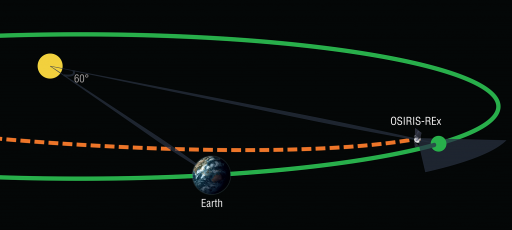
“The Earth-Trojan asteroid search provides a substantial advantage to the OSIRIS-REx mission,” said OSIRIS-REx Principal Investigator Dante Lauretta. “Not only do we have the opportunity to discover new members of an asteroid class, but more importantly, we are practicing critical mission operations in advance of our arrival at Bennu, which ultimately reduces mission risk.”
After its search for Trojans, OSIRIS-REx will quietly continue on its cruise, making one lap around the sun before being inbound again for the September 22 Earth flyby. The flyby, targeting an altitude of around 20,000 Kilometers, is designed to bend the spacecraft’s trajectory, modifying its orbital inclination to six degrees in order to match Bennu’s inclination.
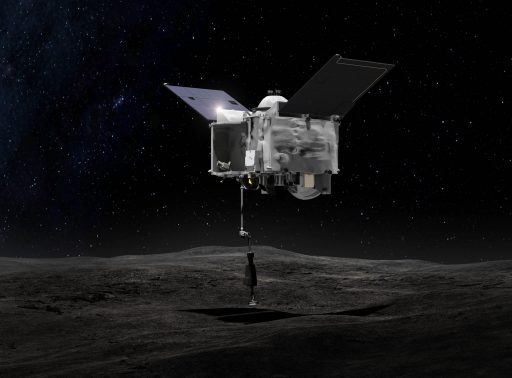
The Asteroid Approach Phase will start in mid-August 2018 when Bennu will start growing in the spacecraft’s telescopic camera from just a speck of light. Major rendezvous burns will slow down the spacecraft for arrival in the vicinity of Bennu in November 2018 to initiate a year-long surveying phase during which the spacecraft will orbit the asteroid at different distances. Several rehearsals will be held before OSIRIS-REx will commit to a touch-and-go maneuver to hopefully collect up to two Kilograms of sample material from Bennu.
Per the current plan, OSIRIS-REx is expected back on Earth in September 2023 after a seven-year journey. However, teams could opt for any earlier return to get their hands on the mission’s sample a full year ahead of schedule.
Bennu, the mission’s target asteroid, is a dark, unexplored world roaming the inner solar system in an orbit taking 1.2 years for one lap around the sun.
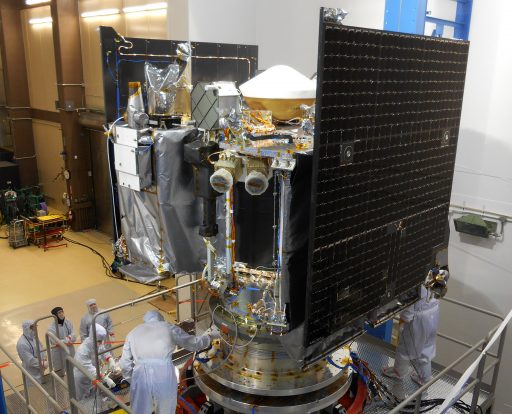
Visiting a carbon-rich asteroid was a top priority for scientists since asteroids are considered relics from the early stage of the Solar System, carrying a record of the conditions 4.5 billion years ago and possibly holding clues that could reveal how the building blocks for life were delivered to Earth and, possibly, other places in the Solar System.
Around 500 meters across, Bennu grazes past Earth every six years and is one of a few known asteroids that are considered potential Earth impactors. An impact of Bennu in the next century and beyond can not be ruled out due to minute variations in its flight path caused by external influences from the sun – an effect to be studied by OSIRIS-REx to better calculate the path other threatening asteroids will take.

